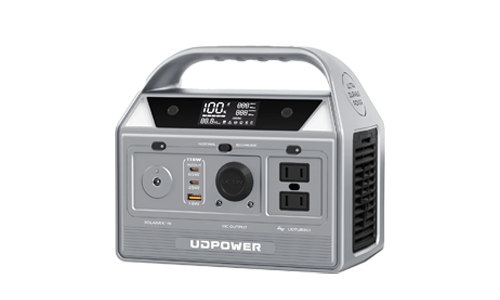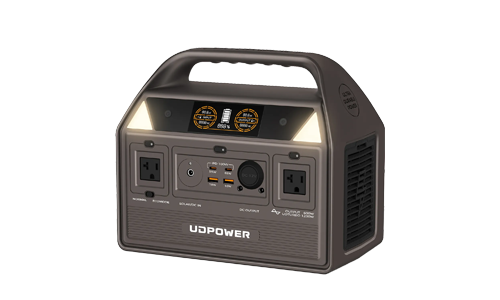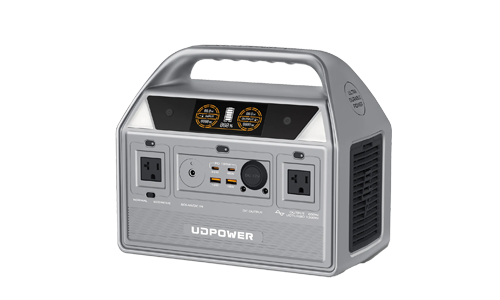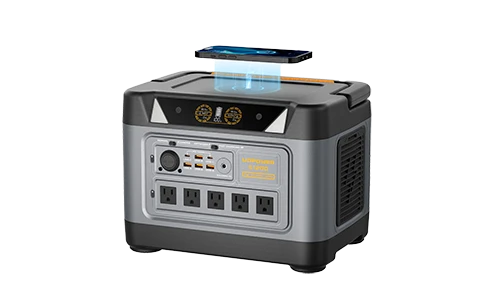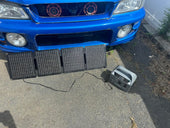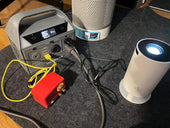What Can a 400-Watt Power Station Run?
ZacharyWilliamQuick answer: a 400W portable power station comfortably runs small appliances and electronics—LED lights, Wi-Fi routers, fans, laptops, camera gear, and CPAP (with humidifier off). It won’t power high-draw heaters, kettles, or microwaves.

Tip “400W” is the inverter’s continuous output, not the battery size. Battery size is measured in watt-hours (Wh) and determines how long devices can run.
400W vs Wh—Know the Difference
- 400W output: the inverter’s continuous power. Many units also list a surge (e.g., 800W) to absorb short startup spikes.
- Battery capacity (Wh): how much energy is stored. A 256Wh pack can theoretically deliver 256 watts for ~1 hour, or 25.6 watts for ~10 hours, and so on.
- Efficiency: AC output passes through an inverter (assume ~85%); DC ports (USB-C, car socket) are more efficient.
- Sine wave: choose pure sine-wave for sensitive electronics.
Runtime Math (One Formula)
Conservative defaults for estimates: DoD ≈ 90%. Efficiency: AC ≈ 85%, DC ≈ 95%.
Example: with a 256Wh battery (typical of compact 400W units), a 60W laptop on AC ≈ 256 × 0.9 × 0.85 ÷ 60 ≈ 3.3 hours. Via USB-C PD (DC path) it’s closer to 3.6 hours. Ideal “max case” ignoring losses is 4.3 hours.
What a 400W Can Run (with Examples)
Easy & Safe
- LED light strings or bulbs (5–10W)
- Wi-Fi router (10–15W)
- Phones, tablets, cameras, drones (USB-C/USB-A)
- Laptops (60–100W; best via USB-C PD if supported)
- 12V car-style fridge (40–60W average; watch startup)
- Box/desk fan (20–75W)
- CPAP without heated humidifier (≈ 40–60W)
- Small TV (60–100W)
Borderline or No
- Microwave, electric kettle, hair dryer, space heater (700–1500W+)
- Induction cooktop, toaster, air fryer (800–1800W)
- Large tools or fridges with high surge—check starting watts
Pro move: when you can, use DC ports (USB-C PD or 12V) instead of AC to stretch runtime.
What It Can’t Run (and Why)
High-heat appliances draw far beyond 400W continuously. Even if a device briefly turns on (surge under 800W), sustained load over 400W will trip protection. For borderline items like compressor fridges, verify starting watts.
Runtime Table for a 256Wh/400W Unit
Below uses three estimate styles for clarity:
- Ideal (Max): 256Wh ÷ Watts (ignores losses)
- Realistic AC: 256Wh × 0.9 × 0.85 ÷ Watts ≈ 195.84Wh ÷ Watts
- DC Hint: Using DC ports typically adds ~10–12% vs AC.
| Load (W) | Ideal (h) | Realistic AC (h) |
|---|---|---|
| 10 | 25.6 | 19.6 |
| 30 | 8.53 | 6.53 |
| 60 | 4.27 | 3.26 |
| 80 | 3.20 | 2.45 |
| 100 | 2.56 | 1.96 |
| 150 | 1.71 | 1.31 |
| 200 | 1.28 | 0.98 |
| 300 | 0.85 | 0.65 |
| 400 | 0.64 | 0.49 |
Why your numbers vary: device power fluctuates; inverters aren’t perfectly efficient; cold weather reduces effective capacity; and cables/adapters add small losses.
Real-World Scenarios
Camping / Road Trips
LED lights + router hotspot + phones + a fan. Add a 12V car fridge (≈ 40–60W average) and you’re still under the 400W ceiling.
Outage Backup
Keep Wi-Fi, phones, and a small TV going for a movie night. Prioritize DC charging to stretch time.
Photo/Video Days
Top off drone/camera batteries and run a laptop for quick edits. Use USB-C PD whenever possible.
Ports, Surges & Multi-Device Tips
- Watch total load: adding devices simply sums watts; keep ≤ 400W continuous.
- Surge vs continuous: a unit may allow ~800W for short spikes; this helps with compressor starts but won’t sustain high loads.
- Choose the right port: USB-C PD for laptops/phones; 12V car socket/DC5521 for fridges/routers; AC for devices without DC input.
- Eco modes: many units auto-sleep with no load—handy for trickle devices.
Charging & Solar Refill
- Wall + USB-C dual-input: some units combine DC adapter with USB-C PD for faster 0–80/90% top-ups.
- Car charging: practical while driving; expect moderate rates.
- Solar: estimate hours ≈ Battery Wh ÷ (Panel Watts × system efficiency × “sun hours”). A 256Wh pack with a 120–150W panel often needs ~2–4 “good sun” hours for a substantial refill, depending on conditions.
Buying Checklist for 400W Power Stations
- Battery chemistry (LFP/LiFePO₄ preferred for longevity)
- True pure sine-wave inverter; clear rated vs surge specs
- USB-C PD wattage (65W is ideal for many laptops)
- Number of AC sockets and 12V/DC5521 outputs
- Recharge paths (wall, car, USB-C, solar) and combined rates
- Weight/size and carry handle design
- Warranty length and published safety protections
When to Step Up (600W/1000W Class)
Stay with 400W if you mainly run lights, routers, fans, camera gear, and a laptop or two. Step up to 600W/1000W when you need compressor devices with higher surges, multiple AC appliances at once, or significantly longer runtime from a bigger battery.
Light Recommendation (Specs-Accurate)
UDPOWER C400 — Compact 400W Pick
- Battery: 256Wh LiFePO₄
- Output: 400W (pure sine), 800W surge
- Ports: 2× AC, 2× USB-C (65W + 35W), 1× USB-A (18W), 2× DC5521, 12V car socket, jumper port
- Charging: wall adapter + USB-C dual-input up to 165W; solar up to 150W
- Weight/Size: ≈ 6.88 lb; 8.27″ × 5.12″ × 7.09″
View UDPOWER C400 (best for day trips, light camping, and outage basics).

Need More Headroom?
Recommendation kept light—choose by the watts you need to run and the hours you need them to last.
FAQs
Is 400W the same as 400Wh?
No. 400W is output power. Wh is stored energy. Runtime depends on Wh, not just watts.
Can a 400W power station run a fridge?
Mini 12V fridges (≈ 40–60W average) are fine; large AC fridges often need higher startup surges—check the label.
How long will it run a CPAP?
Ballpark with a 256Wh pack: ideal up to ~6.4h at 40W; realistic ~4.9–5.5h depending on AC/DC and settings. Turning off heated humidification extends time.
Why is AC runtime shorter than my math?
Inverter losses. Using DC outputs (USB-C/12V) improves efficiency.
Can I charge and discharge at the same time?
Most units support pass-through with limits. Check the manual to understand safe combined power.
What’s the best solar panel size?
For ~256Wh, a 100–150W panel is a good match for daytime refills.


